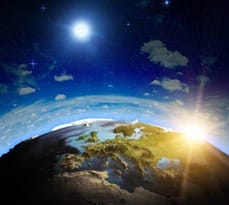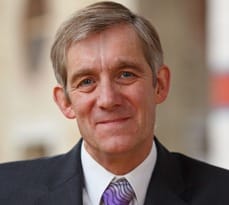Dr Chris Hope’s PAGE2002 model has been used worldwide to calculate the true cost of climate change
 Global problems call for global solutions, and Dr Chris Hope’s PAGE2002 model is just that. A method for estimating the economic impact of climate change, it’s been used by governments worldwide, the IMF and other international organisations, since its original inception in 2002.
Global problems call for global solutions, and Dr Chris Hope’s PAGE2002 model is just that. A method for estimating the economic impact of climate change, it’s been used by governments worldwide, the IMF and other international organisations, since its original inception in 2002.
The impact of Hope’s work has been fundamental. The 2007 Stern Review on the economic impact of climate change chose PAGE2002 as its sole model to estimate the impact of climate change in money terms. Unsurprising, then, that the Financial Times hailed Dr Hope an unsung hero for showing “that you can save the planet while keeping the economy healthy”.
Back in 1991, when Dr Hope began the research that would eventually lead to PAGE2002, his aims were simple.
I wanted to help governments and other decision makers decide what would be a good policy for dealing with climate change, and to use the best information from science and economics to give them the evidence to make those decisions,” he says. “There was a lot that we didn’t know at the time and don’t know now. Therefore, you have to give advice which helps people to decide how to tackle the risks and weigh up the rewards that you get from measures which might reduce the risk, and prevent something bad happening in the future.
The result was PAGE2002. It simulates using the best scientific information linking greenhouse gas emissions and climate, calculates how climate change costs could develop in the future, and estimates the costs and benefits of climate change policies, such as emissions taxes.
The model captures all five of the ‘reasons for concern’ listed by the 2001 Intergovernmental Panel on Climate Change (IPCC) report – risks to unique and threatened ecosystems, risks from extreme climate events, distribution of impacts, aggregate impacts, and, finally, risks from future large-scale discontinuities.
The IPCC used very neutral language,” says Dr Hope. “They used ‘discontinuities’ but most people would think of these as being real catastrophes, such as the melting of the Greenland ice sheet or the West Antarctic ice sheet, setting in train a sea level rise of 10 or 15 metres. That would redraw the world map.
The Stern Review’s results – that climate change would have a far greater impact on economies than previously thought – made headlines across the globe and gave rise to a general shift in thinking about the issue. “The resulting estimates were a crucial part … [and] are certainly the most cited part of the Review, not only in academia but also in the policy and public debate,” says Dr Simon Dietz of the Stern team.

Since the Stern Review, PAGE2002 has been used across the globe: by the UK government’s Eliasch Review to calculate the costs and benefits of actions to reduce global deforestation; by the US Environmental Protection Agency (EPA), to work out the marginal impact of one tonne of CO2 emissions; and by the International Monetary Fund (IMF), whose calculations using the PAGE2002 model form the basis for their guidance on carbon pricing.
But the model, like the climate itself, does not stand still. It is updated whenever the IPCC delivers a new report every six or seven years – PAGE2002 was actually the third version. The newest version, PAGE09, has been used for analyses since 2010, and is the source of the US EPA’s latest numbers for their price on carbon dioxide.
“There’s always new information coming from the scientists and the economists,” says Dr Hope. “You have to make sure that you’re up-to-date and relevant, and transmitting that information to policymakers in as useful a way as possible.
For example, I’m currently collaborating with Arctic scientists and others to incorporate the fact that Arctic ice has been melting a lot faster than people had expected, and that might then lead to more release of greenhouse gases. These gases don’t just stay in the Arctic. They could lead to, say, more flooding in Bangladesh.
“We want to try and include that into the model in a better way, to see what effect it will have on the rest of the world. All this stuff is still ongoing. You never say that you’ve made it perfect and you’re going to stop.”

